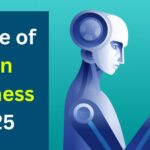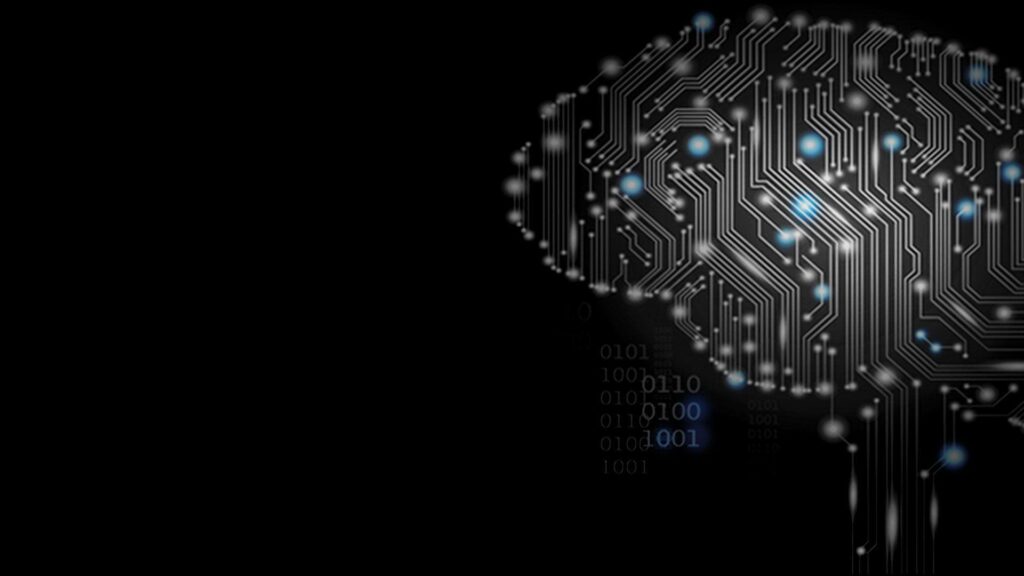Introduction
Imagine sitting under a Bodhi tree, seeking clarity in silence—only this time, the tree is digital and whispers wisdom in code. That’s where we are today, where ancient mindfulness meets modern artificial intelligence (AI). You might wonder, Can a machine help us become more human? That’s exactly what Enlightenment AI is aiming to do—marry the calm of inner awareness with the power of data-driven insight.
This article takes you on a journey through this fascinating blend of age-old philosophy and cutting-edge technology, using a clear, conversational tone to guide you. So, let’s explore how Enlightenment AI is transforming the way we think, feel, and connect—with ourselves and the world.
What is Enlightenment AI?
Enlightenment AI is a new frontier where technology meets spirituality. It’s about designing intelligent systems that don’t just compute, but comprehend the human emotional and mental state. The goal isn’t just smarter machines—it’s wiser humans.
Think of it as a digital monk: always learning, always listening, and surprisingly—helping you become more aware.
The Roots: What is Mindfulness?
Before diving into machines, let’s revisit the ancient wisdom. Mindfulness is the practice of being fully present, aware of where you are and what you’re doing, without being overwhelmed. It originated in Buddhist traditions but has become universal—used in schools, hospitals, and even the military.
In short, mindfulness is mental hygiene. Just like brushing your teeth cleans your mouth, mindfulness cleans your mind.
The Rise of Mind-Tech Synergy
AI has revolutionized everything from navigation to Netflix. So, why not self-awareness?
In the past decade, there’s been a surge in mental health apps, wearable devices, and AI-powered coaches. Platforms like Enlightenment AI stand out by combining real-time emotion tracking, guided meditations, and philosophical prompts to support mental clarity.
This isn’t a gimmick—it’s a movement.
How Enlightenment AI Actually Works
Here’s where it gets exciting.
Enlightenment AI uses:
-
Natural Language Processing (NLP): To understand what you say or type and respond in a calming, conscious tone.
-
Biometric Feedback: Reads heart rate, stress levels, and breathing patterns via wearables.
-
Adaptive Learning: The more you engage, the better it gets at suggesting practices tailored to your emotional state.
-
Behavioral Insights: It gently nudges you when you’re spiraling or skipping mindfulness rituals.
It’s like having a Zen coach in your pocket.
Benefits of Merging AI with Mindfulness
Blending mindfulness and AI is more than a tech experiment—it’s a life upgrade.
Key benefits include:
-
Enhanced Self-Awareness: Real-time reflection helps you catch thoughts before they control you.
-
Stress Reduction: AI-guided breathing sessions help reduce cortisol levels.
-
Consistency: Machines don’t forget. Ever. They remind you gently to practice, reflect, breathe.
-
Accessibility: Not everyone can visit a monastery—but everyone has a phone.
Real-Life Applications
So how’s Enlightenment AI actually used? Let’s look at a few examples:
-
In Education: Helping students cope with stress and exam anxiety through tailored meditation.
-
At Work: AI mindfulness tools increase focus and reduce burnout.
-
In Therapy: Therapists use AI to supplement sessions, giving patients daily support.
-
For Seniors: Simple voice interfaces help the elderly practice mindfulness without needing screens.
Challenges and Ethical Considerations
Not all that glitters is enlightened.
Concerns include:
-
Privacy: Mindfulness apps often collect deeply personal data. Who owns it?
-
Over-Reliance: There’s a risk we might let machines guide our inner lives a bit too much.
-
Cultural Sensitivity: Mindfulness isn’t just breathing exercises—it’s rooted in deep philosophy that shouldn’t be diluted.
Enlightenment AI platforms must walk the tightrope between utility and authenticity.
The Human Touch in a Machine World
Despite its power, AI can’t replace the human soul. What it can do is enhance it.
Just like a candle doesn’t become dimmer by lighting another, AI can amplify human wisdom without stealing its warmth. It’s a partnership, not a replacement.
Think of Enlightenment AI as a digital sherpa, guiding you up the mountain of your own mind.
Ancient Wisdom in a Digital Skin
AI might seem futuristic, but it’s learning from the past. Enlightenment AI integrates concepts from:
-
Stoicism: “You are not your thoughts.”
-
Buddhism: “Attachment is suffering.”
-
Taoism: “Flow with life.”
By encoding these into its algorithms, Enlightenment AI offers more than productivity hacks—it delivers philosophical support for modern chaos.
Personal Stories and Testimonials
Take Sara, a high-school teacher who used Enlightenment AI to manage burnout. “It wasn’t just an app—it was a mirror,” she says. Or Jamal, a veteran who found peace through AI-guided breathing paired with trauma counseling.
These aren’t just anecdotes—they’re evidence that when tech is soul-conscious, it transforms lives.
Future of Enlightenment AI
What’s next? Possibly:
-
AI Meditators: Bots that meditate with you, adjusting breath patterns.
-
Dream Trackers: Helping analyze your subconscious patterns.
-
Empathy Engines: AI that not only listens but feels with you—training us to be kinder.
Enlightenment AI is paving the way for Emotional Intelligence 2.0.
How to Integrate It Into Daily Life
Start simple.
-
Use mindfulness apps with AI journaling.
-
Wear a smartwatch that prompts you to breathe.
-
Schedule morning reflections with an AI assistant.
Consistency is key. Remember, it’s not about being perfect—it’s about being present.
Tools and Platforms to Explore
Looking to dive in?
-
EnlightenmentAI.co – Offers guided practices and emotional tracking.
-
Calm + AI Plugins – For a serene yet tech-savvy experience.
-
Muse Headbands – Real-time brainwave feedback for deep meditation.
Test a few and see which digital guru fits your spiritual shoe.
Mindfulness vs. Automation: A Balancing Act
Here’s the paradox: Automation frees time, but what do we do with that time?
Enlightenment AI encourages us to use freed-up moments for inner growth, not just doom-scrolling. Instead of AI replacing us, it reminds us to return to ourselves.
It’s not about going faster—it’s about going deeper.
Conclusion
We’re no longer asking, “Can AI think?” Now we ask, “Can it help us think better?”
By combining ancient teachings with smart tech, Enlightenment AI is helping people not just live more efficiently—but more meaningfully. It’s not the machine that changes us—it’s how we choose to engage with it.
So, maybe the next time you pause to breathe, it won’t just be your lungs—it’ll be your spirit syncing with silicon.
Frequently Asked Questions
1. What is Enlightenment AI and how does it work?
Enlightenment AI is a system that combines artificial intelligence with mindfulness practices to promote emotional well-being and self-awareness through guided sessions, biometric feedback, and philosophical prompts.
2. Can AI really help improve mindfulness?
Yes, AI can remind, guide, and even adapt practices based on your mood or behavior, making mindfulness more accessible and consistent.
3. Is my data safe with mindfulness AI apps?
That depends on the platform. Always check privacy policies. Enlightenment AI emphasizes ethical use, but caution is essential.
4. Do I need expensive gadgets to use Enlightenment AI?
Not at all! While wearables help, many features are accessible through mobile apps or desktop interfaces.
5. Is Enlightenment AI meant to replace therapists or meditation teachers?
No. It’s a complement, not a substitute. It enhances human support by filling gaps between sessions or providing immediate, gentle prompts for reflection.
- Mindfulness Meets Machine: Enlightenment AI Explained
- Discover how Enlightenment AI blends ancient wisdom with tech. Explore mindfulness powered by enlightenment ai in this human-friendly deep dive.
- Enlightenment AI
Related posts:
 Can Generative AI Truly Replace Human Creativity in the Future?
Can Generative AI Truly Replace Human Creativity in the Future?
 Blurring Boundaries: How AI is Reshaping the Future of Digital Art?
Blurring Boundaries: How AI is Reshaping the Future of Digital Art?
 Exploring Coderway.net: A Modern Gateway to AI-Powered Image Creation
Exploring Coderway.net: A Modern Gateway to AI-Powered Image Creation
 The Future of AI in Business: Predictions for 2025 and Beyond
The Future of AI in Business: Predictions for 2025 and Beyond
 Understanding AI Inference as a Service: How It Powers Smart Applications
Understanding AI Inference as a Service: How It Powers Smart Applications
 The Role of AI Model Libraries and Vector Databases in Modern AI Deployment
The Role of AI Model Libraries and Vector Databases in Modern AI Deployment
 Revolutionizing App Development in Dubai with AI-Powered Custom Solutions
Revolutionizing App Development in Dubai with AI-Powered Custom Solutions
 Artificial Intelligence Development Services: What You Need to Know
Artificial Intelligence Development Services: What You Need to Know







